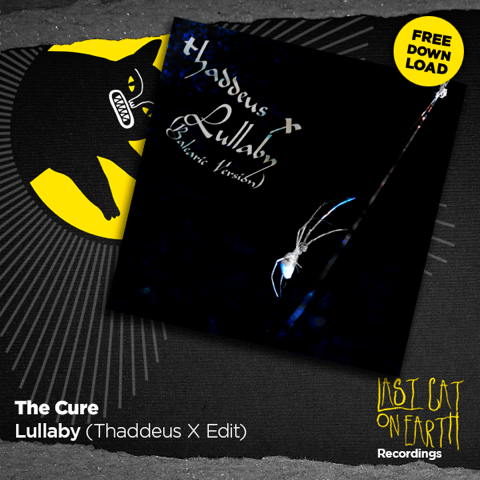Austrailian producer Hood Rich has been hard at work in the studio after his recent Country Club, Psycho Disco! and This Ain’t Bristol releases. Performing at notable venues throughout his homeland, including Chinese Laundry in Sydney and Tramp in Melbourne, he’s seen a large amount of support from his peers.
Hood Rich now returns to Medium Rare Recordings with ‘Let It Go’, featuring Sydney-based BRUX, now streaming on all platforms.
For the special occasion, Hood Rich shares 5 studio tips that helped him produced his latest release.
1. Audio Manipulation
If you feel like the synth line, bass sound or whatever you’re working on is sounding a little uninspired then flattening to audio could be something worth exploring. Here are some techniques I use on the regular!
– Flatten midi or audio then stretch the audio clip out to sustain the sound or stretch it more drastically to add some glitch flavour.
– Transposing audio down a couple of octaves then flattening/consolidating then transposing back to the original pitch. This can instantly add some really interesting textures.
– Combining these techniques with the audio effects is very dank, a pretty standard example would be adding reverb to a sound then flattening to audio and editing the reverb tail. you could then automate the pitch of the reverb tail, stretch it, reverse it, etc.
These techniques are super powerful if you’re using Ableton as there’s a bunch of different warping modes that affect the audio significantly different. Audio manipulation can be so simple but easily add another dimension of creativity to your production.
2. Swing
This is a pretty basic one but I thought id just touch on a couple of different ways to use swing in a track. Applying swing/groove to notes properly can be the difference between a really sick groove and something yawn-worthy.
– Play midi in with your keyboard or midi device to try to get as close as possible to what you have in your head. Then turn the grid off and move the notes & velocities around to tighten the groove.
– Use the groove pool in your DAW the flatten to midi and adjust the notes. This is super easy in Ableton which means you can get some really cool grooves super fast.
– Another very simple but super effective method is applying swing to only a couple notes in a groove and keeping other notes straight.
– Extract swing from a loop or groove. I’m not sure if this can be done in other DAW’s but it’s super easy in Ableton. There are certain criteria you need to be careful of when doing this to get the correct result but I’m not going to explain that in full detail – check out a tutorial if you’re interested!
– Use an arpeggiator. This is a pretty complex method so I’m not gonna explain it but it’s definitely sick and worth checking out if you’re looking for a fresh way to add groove your tracks.
3. Find Your Way
Every producer’s workflow is different but it’s important to find out what works best for you. Some people mix and arrange at the same time, others write the entire track with barely any mixing then mix at the end, others use other people to mix their records. It doesn’t really matter as long as you get the track done and how you wanted it to sound.
– I try to max out my efficiency in the studio every session. Anything that can help me cut corners and get to the end goal the quickest is sick. The fewer mouse clicks I need to make to get the song down the better. Here are some tips that helped me find my flow which might also help you.
– I never used a DAW template till about 24 months ago and haven’t looked back now. I basically just set out everything that I would always do in a session into a template. You can start as simple as you want, just add in all the things that you use every session. My template isn’t set in stone, it constantly evolves as I find new ways to produce.
– Save your sounds. A lot of the time at the end of a song, i’ll go through and group my favourite bits that I created the save them as instrument or effect racks. Bass patches with the processing, effect racks, drum sounds that i created from audio, anything! This means it will take you a matter of seconds to add sounds from previous songs into new projects.
– Don’t waste time while you’re writing. Generally you’ll only get about 3 to 5 hours of solid writing before your ears get tired and you get bored. Don’t waste your first hour at the desk trying to find the perfect snare sound. Once you have the idea down then go back and spend as much time as you want to get that perfect snare sound.
 4. Get Weird
4. Get Weird
There’s no wrong or right way to make music. Certain things sound awful musically and sonically but it doesn’t make them morally or ethically wrong. My point is although a plugin or technique might have a primary purpose, it doesn’t mean you can’t get freaky with it.
Here are some random tips that might spark some creativity.
– Smash a limiter till it distorts. There are some fresh distortion flavours.
– Take the track volume down then push a saturator to 30db.
– Use a vocoder on chords with an external carrier.
– Chop up foley sounds for drum hits.
5. Keep Learning
This shit takes time if you want to master your trade. Take pride in learning how your tools work. It’s really simple to upskill these days so there is really no excuse to say “I don’t know how that works”.
You’re probably already proactive with developing your skills if you’re reading tips from some random fella like me so nice work mate, give yourself a pat on the back. I find learning is also pretty inspiring at times cause I’ll watch a tutorial and think “holy that could be a cool idea for a song if I did…”
Anyway, here are some basic things I do that help to continue developing my skills.
– When you get a new plugin, spend 10 minutes to an hour learning how it works. Don’t be a dummy and just use presets. There’s nothing wrong with using presets but it’s super useful if you can adjust those presets effectively to what you’re after.
– Youtube, in general, is a powerful resource. I learned pretty much 85% of everything I know from there.
– Pay for mixdown engineer and ask what they did to the track and how you can make your mixes stronger in the future.
– Spend time outside of writing music to practice making sounds or learning how to mix down records. Just cause you’re in the studio it doesn’t mean you have to put out a song. Sometimes it’s super beneficial to fuck around and learn how things work!
Follow Hood Rich: Facebook | Soundcloud | Twitter | Instagram











